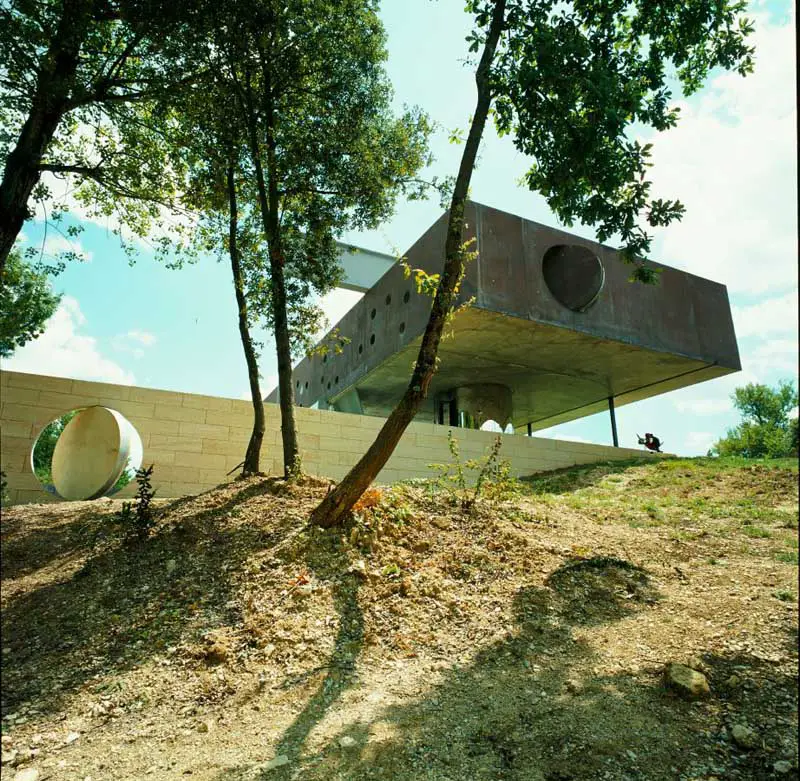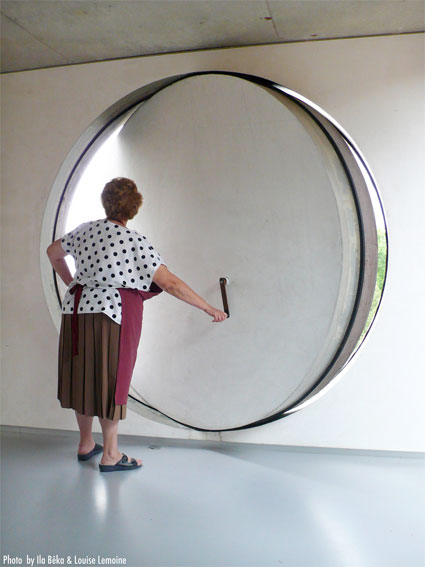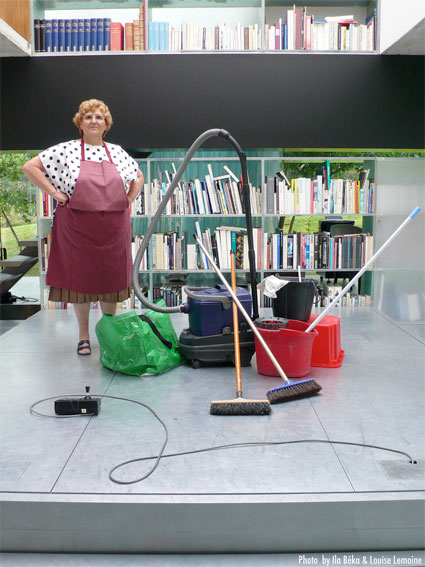
I'm lost in Paris © R&Sie(n)
I'm lost in Paris questions and provokes fantastic scenarios : can a forest grow overnight unnoticed and swallow a city ?
How long would it take nature to destroy the concrete jungle and force us back into a feral state of being ?
R&Sie(n)'s interventions explore our disconnecting from Nature, question architectural and human behaviour : why do we cement the land ? Why do we pesticide the soil in order to eat ?
How long would it take nature to destroy the concrete jungle and force us back into a feral state of being ?
R&Sie(n)'s interventions explore our disconnecting from Nature, question architectural and human behaviour : why do we cement the land ? Why do we pesticide the soil in order to eat ?
Streamside day © Pierre Huygue
And why do we do romanticise Nature, thinking it needs saving ?
The natural world is in constant metamorphosis for its own survival and the maintenance of plant and bacteria expansion : Nature doesn't need saving but we do.The fern used to grow I'm lost in Paris is a good example of plant world resilience : it species existed before the human race, 360 million years ago.
Its rapid and aggressive nature recalls Kudzu, a plant which survives pollution, fire and lack of nutrients by sprawling over cars, streets, houses or entire landscapes.

Symbiosis'hood © R&Sie(n)
The transformative structural nature of Kudzu which inspired R&Sie(n) to build Symbiosis'hood in Korea blurs the boundaries between two properties as the invasive plant is slowly covering the spatial areas that originally delimit where one property starts and another ends - exposing how Nature reclaims land regardless of human contingencies.

I'm lost in Paris © R&Sie(n)
I'm lost in Paris is a façade for a city laboratory, exploring the way ferns protect the environment from heat and control pollution.
Despite soil and with little water, the hydroponics experiment has managed to grow thousands of them while the glass grapes clean up the air from pollution composing with nature by adapting.
Nature can't be domesticated : architects need to validate the inter-dependence between the human world and the animal/ plant world.
We may not stop the consequences of the Anthropocene but by composing with the natural world we may find our place in it, and hopefully save ourselves and some species.
1200 Hydroponics ferns - a method of growing plants using mineral nutrient solutions, without soil
300 glassblown "grape-drops" beakersPhytoremediation - the science of using plants to help clean up pollution












